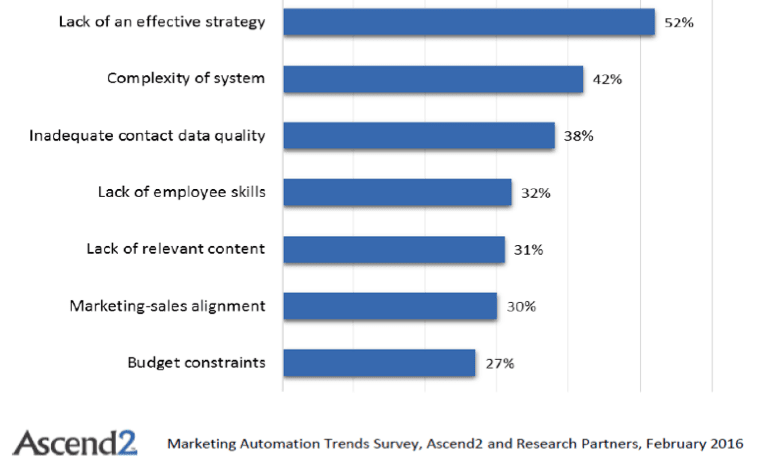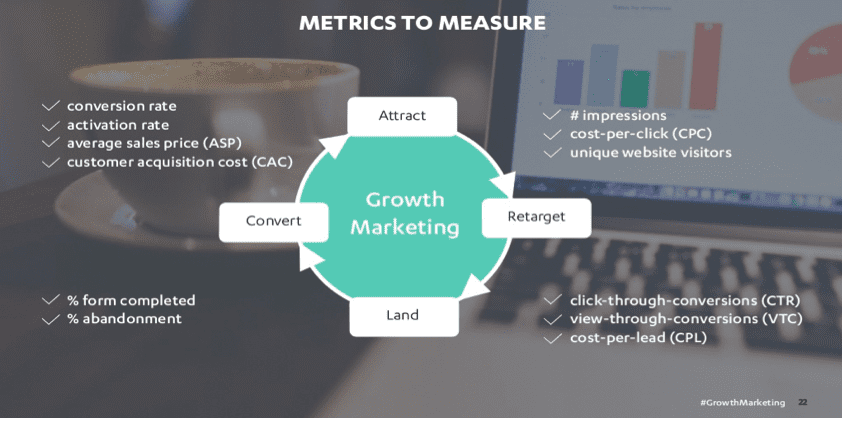Marketing Automation offers the key to effectively nurturing leads through the customer's journey
According to a research published by Smart Insights in 2016, 47% of businesses don't have a digital marketing strategy. The findings show that businesses have a big challenge structuring their digital marketing strategy and knowing where to start.
So, how about we start by laying down some of the groundwork that you need to lay down in order to create and implement your world-class digital marketing strategy the right way from scratch.
The strategy includes 4 key stages of the RACE framework - plus the initial Plan stage. Just in case you're not familiar with RACE, the stages are as follows:
1. Plan:
This stage involves creating the overall strategy with SMART goals and measurable KPIs to run your digital marketing strategy.
2. Reach:
Most customer’s journey’s begin through doing personal research instead of simply talking to a sales person. This means that providing content to feed this research is invaluable. Therefore, developing appropriate content throughout the sales process should build awareness and draw people into your sales funnel.
3. InterACT:
Since not everyone you attract becomes a customer immediately, you don’t want to waste your efforts by letting any prospects slip through your fingers. This means that you have to use strategies to re-target and lead prospects back into the sales funnel. This is the focus of this stage.
4. Convert:
Once you have attracted good leads you ultimately want them to make a purchase or opt-in to one of your offers. This is the stage where you turn subscribers into customers. And yes, a good marketing automation tool as well as remarketing strategies to ensure contextual relevance (addressing each lead/subscriber’s needs according to their stage in the sales funnel), can help you a lot at this stage.
5. Engage:
After converting subscribers into customers, you still need to nurture them. The idea here is for your customers to become repeat customers and not just one-time customers.
Nurturing requires personal attention through long-term engagement in order to build customer loyalty. This is done through listening and talking to your customers wherever they may be or wherever they like to hang-out online.
What makes winning the conversion journey with marketing automation difficult?
According to a survey by Ascend2 and Research Partners done on February 2016, there are several barriers that make marketing automation unsuccessful. The most significant barriers are as follows;
How to win with marketing automation
In order to be successful and win with conversion journey marketing automation, setting SMART goals for your marketing automation system and for your overall sales funnel will be necessary for you to follow through on. The following goals should be your priority:
- Growing lead generation
- Enhance lead nurturing
- Grow sales revenue
- Enhance customer engagement
- Enhance marketing productivity
- Enhance performance measurability
- Enhance campaign targeting
With these goals in mind, the following activities need to be a part of your marketing automation strategy, especially from the subscriber to customer phase.
1. Triggered actions
Paying attention to subscribers and having real-time responses to the changing status of leads in the sales funnel can make the difference between losing a customer and winning them over. Through marketing automation alerts, you can stay on top of targeted responses.
This will mean that careful profiling of prospects before they become subscribers will help you to better keep track of their stage in the sales funnel. As such, using lead forms to build profiles and tracking website behavior will help you figure out intentions, and the leads current buying status to better segment and nurture them.
2. Analysis and reports
Analyzing the effectiveness of campaigns allows a better understanding of what’s most important in moving individuals through the sales funnel. This is very useful since it will allow you to move leads through the sales funnel much faster due to automated nurturing.
Important metrics and points of analysis to pay attention in marketing automation
3. Lead nurturing
According to The Annuitas Group, nurtured leads makes 47% larger purchases than non-nurtured leads. If you want to nurture your leads most effectively, personalized one-on-one attention is a must. If you don’t engage in personalized nurturing, your competitors will and you will lose customers.
Personalized attention is about having interactive experiences, building relationships, trust and recognition for your brand. Providing this positive experience will allow you to win the nurturing game and contribute to a successful conversion journey for your leads.
Additionally, by providing contextual relevance, that is, through providing dynamic content in order maintain interest and engagement, you will create a better user experience.
4. Email marketing
Using marketing automation to appropriately educate and remind subscribers that you are the best solution when they are ready to make the buying decision. Marketing automation can help you to stay top of mind.
5. Integration capabilities
Since sales and marketing teams have been using other technologies like CRMs long before marketing automation tools, integrating these tools with marketing automation tools is crucial.
For example, sending the CRM all the intelligence and data that you gather trough the marketing automation tool will provide for better interaction and conversations with leads. This is because the sales teams will have all the necessary information in the same pipeline that they are already comfortable using.
6. Lead scoring
Since sales teams have to do so much more within a shorter time period, time is more precious than ever before. This means that leads have to be prioritized in order to increase efficiency and effectiveness. As such, setting up lead scoring systems through marketing automation systems will bring the urgency and prioritization to the forefront of the sales teams tasks.
7. List segmentation
Email lists are important for determining who receives emails through the marketing automation system. What’s more important however is after initial lists have been created, rules need to be set up so that the list can be refined and leads moved to relevant in-between lists in the sales funnel.
The refined lists will allow leads to receive appropriate content with respect to their stage in the sales funnel. This is mostly done through behavioral segmentation.
Conclusion
Converting leads and engaging customers is definitely not easy work. Customers expect personalized attention and this requires significantly more meticulousness throughout the varied channels where leads and customers interact.
Fortunately, this is where the promise of good marketing automation systems come in. In essence, marketing automation allows for personalized attention through the different ways that businesses engage with their prospects, leads and customers. This thorough, personalized, unified and seamless sales experience is what will allow you to win the conversion journey.
source http://www.smartinsights.com/lead-generation/marketing-automation/subscriber-customer-winning-conversion-journey-marketing-automation/


 Mohammad Farooq works as a Social Media Analyst. When not doing anything related to Social Media or Analytics, he goes backpacking around India. He regularly blogs about Travel, Movies, Political Issues and a lot of other things on his blog "
Mohammad Farooq works as a Social Media Analyst. When not doing anything related to Social Media or Analytics, he goes backpacking around India. He regularly blogs about Travel, Movies, Political Issues and a lot of other things on his blog "
No comments:
Post a Comment